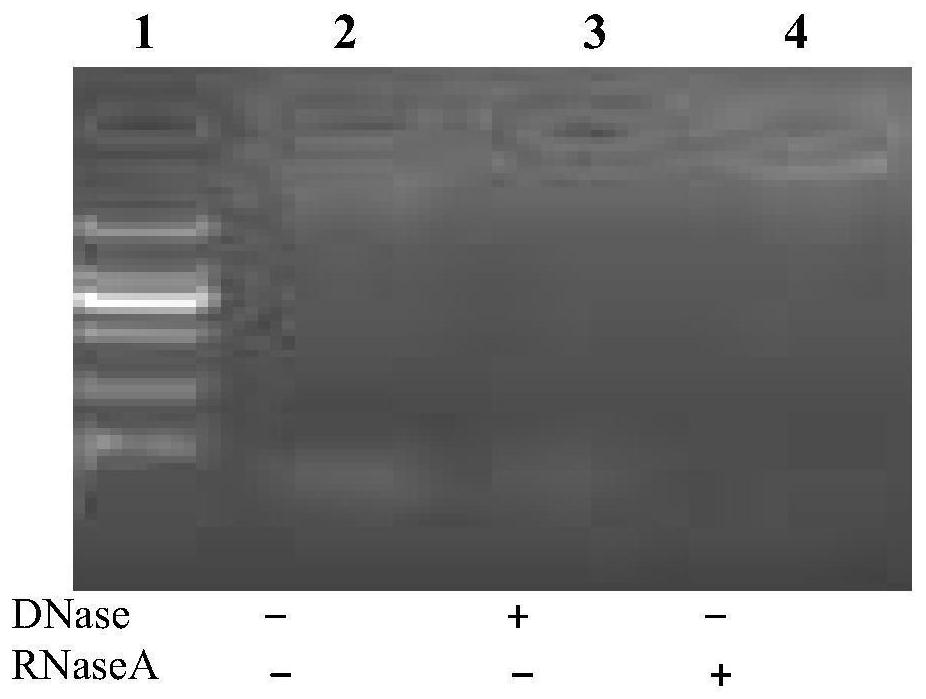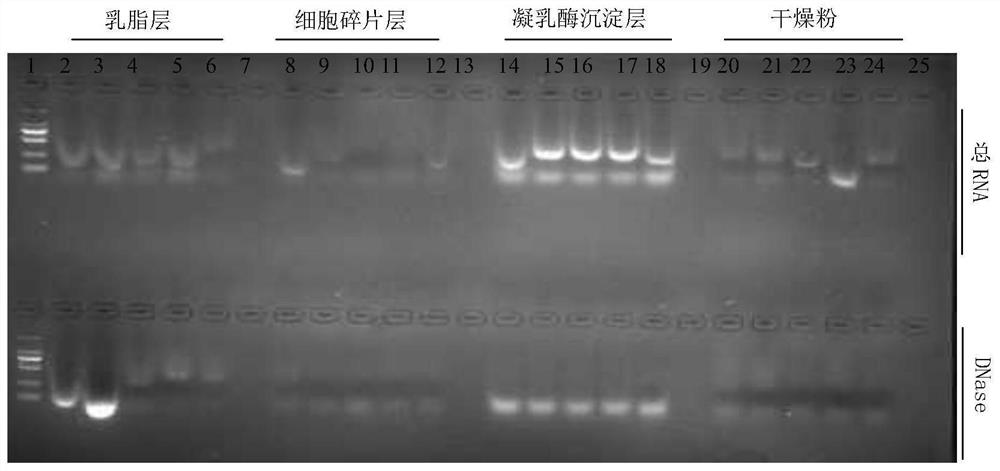A method of extracting milk exosomes
A technology of exosomes and milk, which is applied in the biological field, can solve the problems of high extraction cost, small volume of extracted samples, and high price, and achieve the effect of increasing the volume of sample extraction, saving the amount of sample preparation, and saving the cost of consumables
- Summary
- Abstract
- Description
- Claims
- Application Information
AI Technical Summary
Problems solved by technology
Method used
Image
Examples
Embodiment 1
[0036] As a method for extracting milk exosomes according to an embodiment of the present invention, the method includes the following steps:
[0037] (1) Thaw milk samples stored in a -80°C refrigerator, then centrifuge at 2000g, 4°C, for 30 minutes, collect supernatant A, and precipitate into milk lipoprotein and mammary gland cell fragments (cream layer);
[0038] (2) Centrifuge the collected supernatant A at 12000 g, 4° C., for 30 min, collect the supernatant B, and precipitate milk fat protein, casein and other cell debris (cell debris layer);
[0039] (3) further adjust the pH of the collected supernatant B to 5.7;
[0040] (4) Add rennet to the supernatant B after pH adjustment under the condition of 36°C water bath, the amount of rennet added is: the volume of rennet with enzyme activity 17-18 and supernatant B The ratio is 1:10, and the milk protein precipitate (rennet precipitation layer) is precipitated in 8-10 minutes to obtain supernatant C;
[0041] (5) The sup...
experiment example 1
[0048] 1. Determination of enzyme activity
[0049] Adopt the Arima method: Take 5 ml of 100 g / L skim milk and incubate at a certain temperature (35°C) for 5 minutes, add 0.5 ml of enzyme solution, mix quickly and evenly, and accurately record the time (seconds) from adding the enzyme solution to the coagulation of the emulsion, The amount of enzyme that coagulates 1 ml of 100 g / L skim milk in 40 minutes is defined as a Soxhlet unit (Gao Weidong et al., 2010, Xu Su, 1996).
[0050] Chymosin activity (U)=(2400 / T)*(5 / 0.5)*D
[0051] T - solidification time
[0052] D—dilution factor
[0053] 2. Milk exosome RNA extraction
[0054] The Trizol one-step method was used to extract total RNA from exosome samples, and the specific steps were as follows:
[0055] (1) Put the milk exosome samples obtained in Example 1 and Comparative Example 1 into a 2mL centrifuge tube with 1mL Trizol reagent and quickly homogenize for 20s, and the homogenization time can be appropriately increased...
PUM
 Login to View More
Login to View More Abstract
Description
Claims
Application Information
 Login to View More
Login to View More - R&D
- Intellectual Property
- Life Sciences
- Materials
- Tech Scout
- Unparalleled Data Quality
- Higher Quality Content
- 60% Fewer Hallucinations
Browse by: Latest US Patents, China's latest patents, Technical Efficacy Thesaurus, Application Domain, Technology Topic, Popular Technical Reports.
© 2025 PatSnap. All rights reserved.Legal|Privacy policy|Modern Slavery Act Transparency Statement|Sitemap|About US| Contact US: help@patsnap.com



